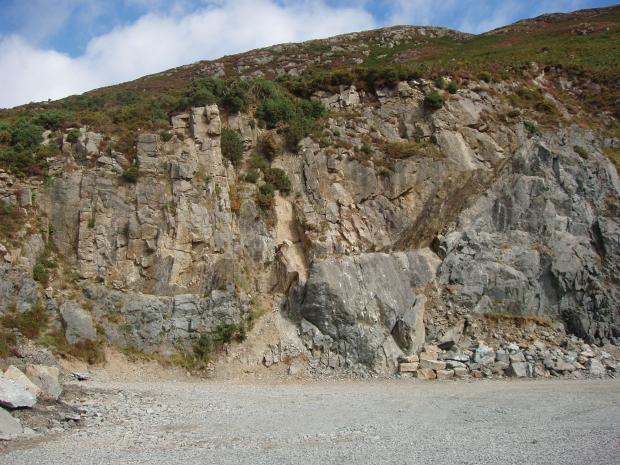
The area is of special scientific interest because of its geology, which is seen in outcrop at a disused quarry on the west side of Camlough Mountain.
The Slieve Gullion volcanic complex, of which Camlough Quarry is a part, is the finest example of a Palaeogene igneous centre in Ireland and is among the best topographic expressions of a ring-dyke system in the British Isles.
The rocks found here are of international geological importance, having played an important role in a number of theories related to the development of and interaction between igneous rocks.
The Slieve Gullion complex developed in an area of crustal weakness, previously exploited by the much older Newry granite, around 400 million years ago.
The Slieve Gullion complex is historically important as it has featured in a number of major geological debates on the nature of igneous rocks and the processes by which they can be formed.
Camlough Quarry exposes the older country rocks which are the turbidites of Silurian age (here melted and fused by the intrusion of the Newry granodiorite and altered into a hornfels) and the late Caledonian age Newry granodiorite itself. The site contains evidence of the complex relationships between highly deformed (sheared) contact metamorphosed Silurian rocks and the Newry Igneous Complex. The quarry face also exposes the inner wall of the younger Palaeogene age ring dyke (here consisting of a porphyritic granophyre). The intrusion is partially fault controlled, thereby providing evidence in support of the theory that the Slieve Gullion Ring Dyke was emplaced in a ring fracture generated during Palaeogene deformation. A late phase of movement along the fault has produced both crush-banded rocks known as mylonites and shattered angular rocks known as the Camlough Breccias. This location provides a fuller understanding of the geological history of the Slieve Gullion Ring complex.
Related articles
- ASSI Guidance for Public Bodies/Competent Authorities
- Coastal Areas of Special Scientific Interest
- Conservation Management Plans (CMPs)
- European Marine Sites - Marine Special Areas of Conservation and Special Protection Areas
- Introduction to Conservation Management Plans (CMPs) for Northern Ireland’s Special Areas of Conservation
- Marine Conservation Zones
- Marine Protected Areas
- Marine Ramsar sites
- Portrush Coastal Zone
- Special Areas of Conservation
- Special Areas of Conservation for Harbour porpoise
- Special Protection Areas
